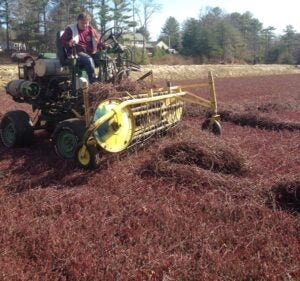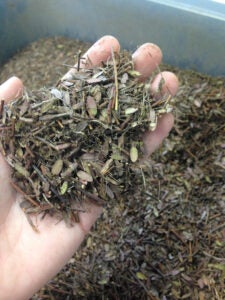
Background
One of the most promising findings in the last 15 years in the search for alternative gastrointestinal nematode (GIN) parasite control has been the discovery that the consumption of some forages containing condensed tannins (CT) suppress GIN infection in sheep and goats. Condensed tannins (CT), also called proanthocyanidins (PAC), are naturally occurring plant compounds that significantly affect the nutritional value of forage by forming complexes with proteins, carbohydrates and minerals.
Cranberries, a major New England crop, contain an abundant supply of bioactive condensed tannins. Cranberry vine is a readily available waste product of the harvesting process and contain a higher percentage of the PAC than the fruit, making it an economically attractive source of PAC.
[box style=”light-yellow shadow” ]
URI Research
URI has been researching the potential of the condensed tannins in cranberry vine to serve as a natural dewormer (anthelmintic). Anti-parasitic efficacy has been demonstrated against larval and adult stages of the barber pole worm (Haemonchus contortus). Research continues to develop an effective, easy and economical cranberry vine feed supplement.

Lead URI researcher:
Katherine Petersson, Ph.D. – kpetersson@uri.edu
Dept. Fisheries, Animal and Veterinary Sciences
[/box]
[hr color=”dark-gray” width=”100%” border_width=”4″ ]
This work is supported by funding from the Northeast Sustainable Agriculture Research and Education Program which is supported by the National Institute of Food and Agriculture, U.S. Department of Agriculture; and the Rhode Island Agricultural Experiment Station (RI00H-900-INT).
